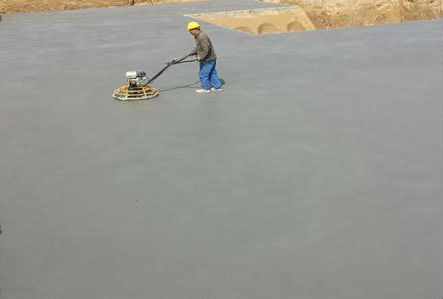
1. Polymer Modified Concrete (PMC)
The process of making polymer-modified concrete (PMC) is similar to that of ordinary concrete. When stirring with water, a certain amount of organic matter and its auxiliary agent are added. After molding and curing, the cement and polymer are solidified at the same time.
The adding amount of polymer is generally 5~20% of the weight of the cement. The polymers used are generally synthetic rubber emulsions such as Neoprene latex (CR), styrene butadiene latex (SBR), Nitrile latex (NBR); or thermoplastic resin emulsions such as Polyacrylate emulsion(PAE), polyvinyl acetate Emulsion (PVAC) and so on. In addition, epoxy resin and unsaturated polyester resins can also be applied.
2. Polymer Modification Mechanism
The polymer in the form of emulsion is added to the cement concrete, after the cement concrete is stirred uniformly, the polymer emulsion particles will be uniformly dispersed in the cement concrete system to form a cement-based composite material. With the hydration of the cement, the water in the system is continuously bound by the hydrating cement, and the polymer particles in the emulsion are fused together. As the moisture decreases, the polymer forms a structure in the cement concrete. Ohama gives a model of this structure formation process and divides this structure formation process into three phases.
When the polymer is interwoven into a mesh film in the cement paste, cement mortar and concrete, the polymer acts as a toughening effect on the one hand, which is mainly manifested in increases flexural strength, reduces compressive strength, Increases splitting strength and bond strength, etc.; on the other hand, it plays a role in improving durability, mainly in the improvement of impermeability, and wear resistance and reduction of shrinkage.
Firstly, the polymer is essentially existed in a three-dimensional, continuous, network-like structure equivalent to "microfibers," which enhances the matrix of the cement paste, resists crack growth, and increases flexural strength;
Secondly, a large amount of surface active material in the polymer emulsion enhances the wetness of the surface of the aggregate of the concrete mixture, and even enters the surface porosity of aggregate, lowering the porosity, thereby forming a polymer film firmly adhering to the surface of the aggregate, improving the binding ability between the aggregate and the base ,improves the fracture performance and effectively prevents cracking and expansion of the microcracks.
Thirdly, the polymer reacts with the cement to a certain degree, which enhances the bond between the polymer and the cement, thereby increasing the flexural strength and splitting strength.
Fourthly, the mechanism of improving the durability of the polymer is also mainly reflected in two aspects: (1) The barrier effect of the polymer space network film structure and the film itself has the properties of temperature insulation, water impermeability, corrosion resistance, etc.; (2) polymer penetrates and fills the pores or large pores of the cement paste, lowering the porosity, increasing the degree of compaction and cohesion, and improving the performance.
3. Polymer-modified concrete (PMC) performance
In polymer-modified mortars and concretes, due to the interpenetrating network structure formed between the polymer and the cement, the adhesion between the aggregates is strengthened, and some pores in the mortar are blocked. Therefore, (1) hydroxybutadiene-styrene emulsion-modified concrete can increase the flexural strength of the concrete, and while appropriately reducing the compressive strength, it reduces the crimp ratio , so that the toughness of the concrete can be enhanced. (2) The permeability of the polymer cement concrete is reduced, so that freeze-thaw corrosion and salt corrosion can be effectively prevented.
4. Maintenance of Polymer Modified Concrete (PMC)
For emulsion-modified cement mortar and concrete, the best maintenance conditions are early wet maintenance to promote cement hydration to a certain degree and then dry maintenance to facilitate the formation of polymer film. The greater the polymer-cement ratio, the greater the increase in strength at the last stage of dry maintenance .
(Sourcing: Baidu)





